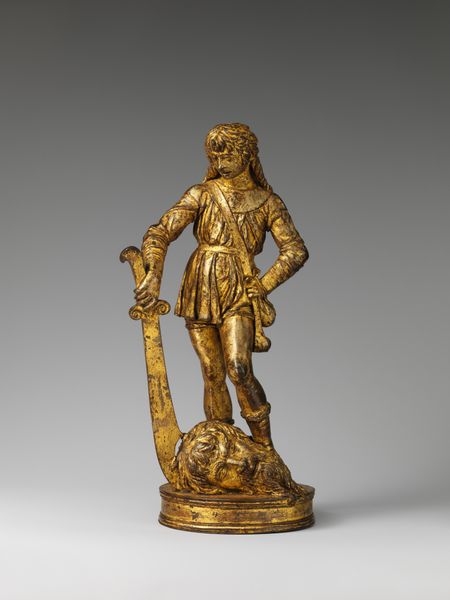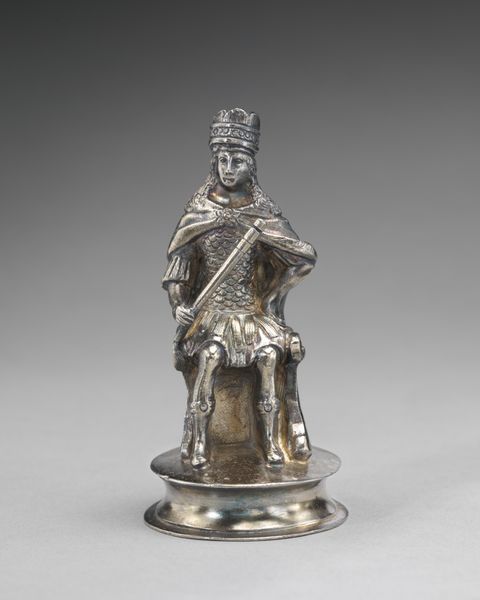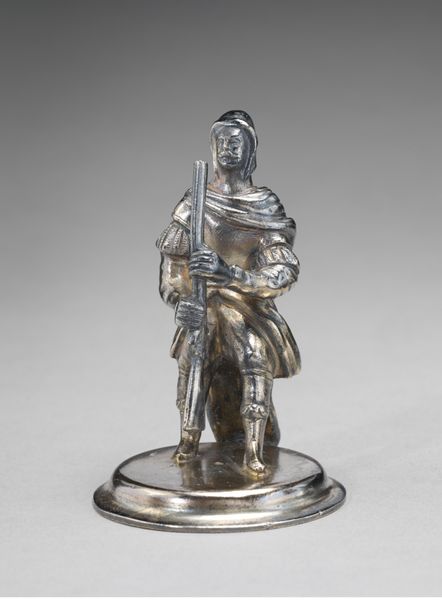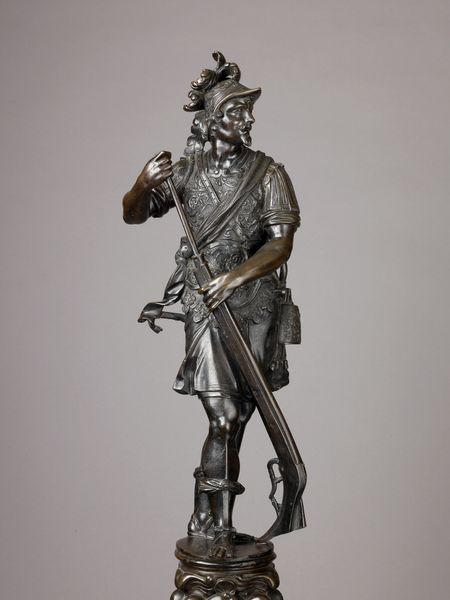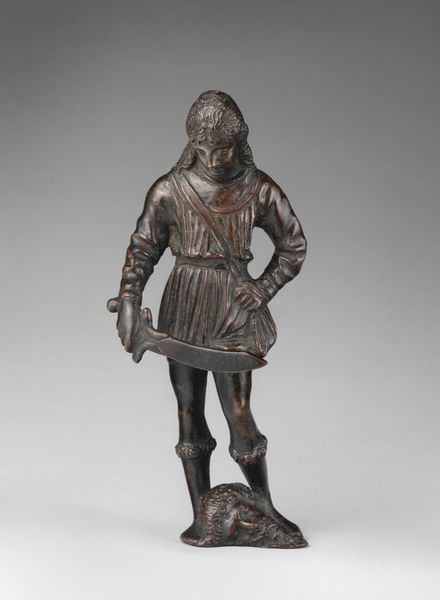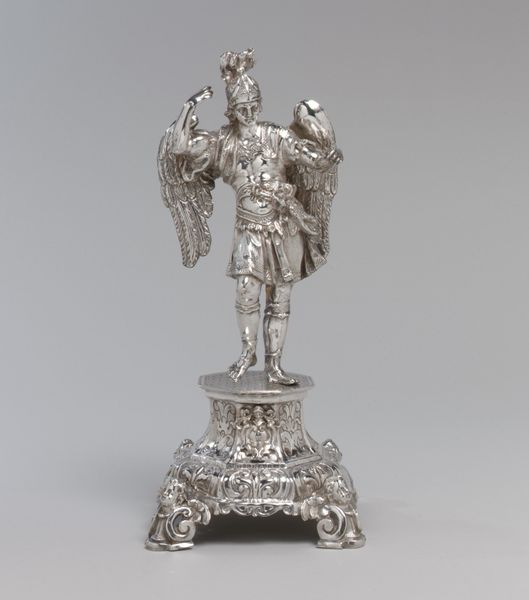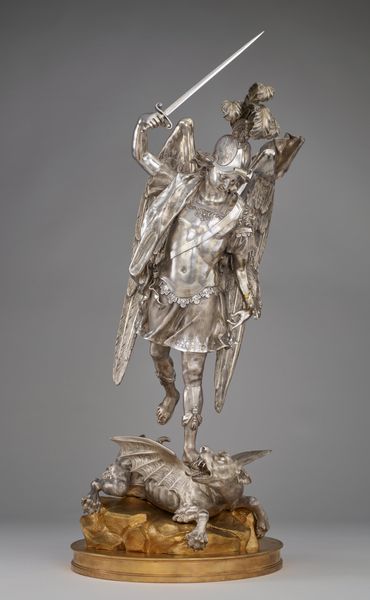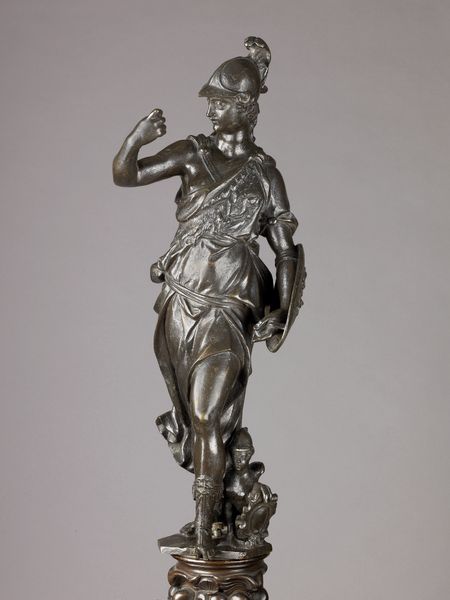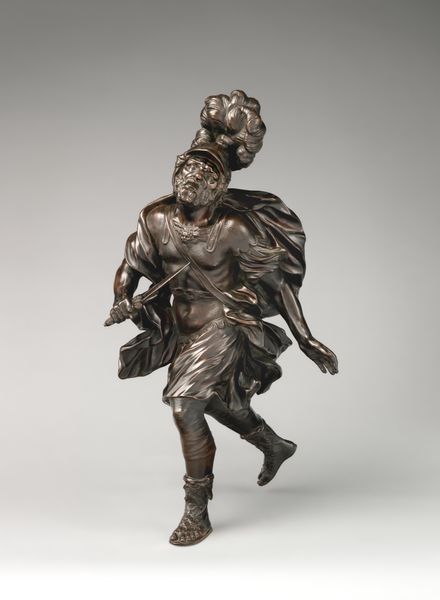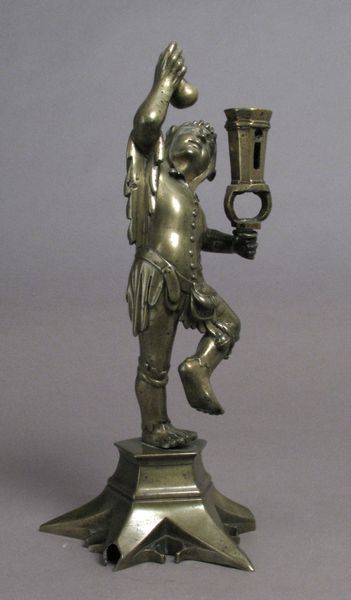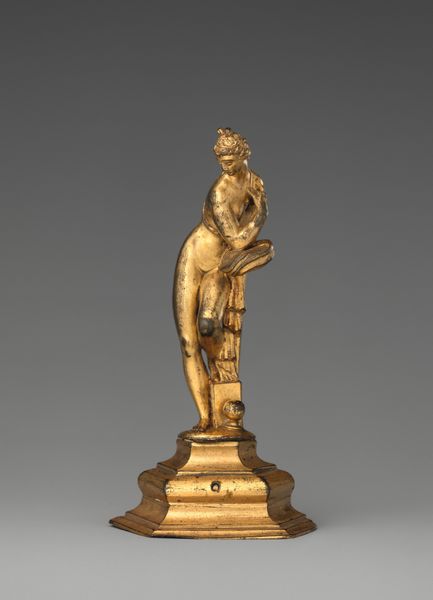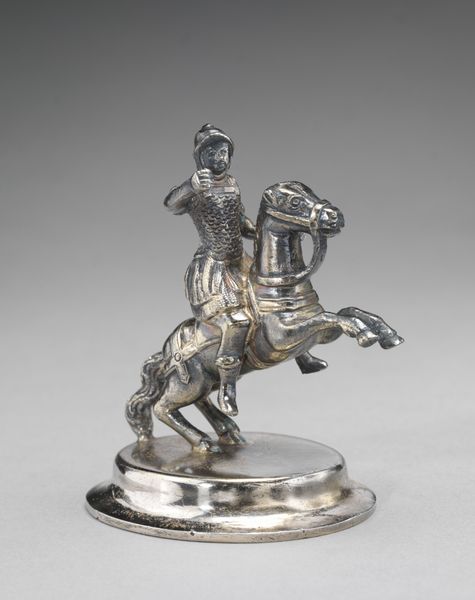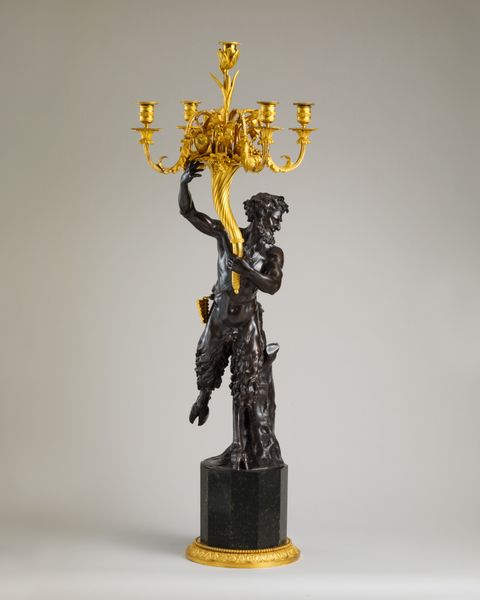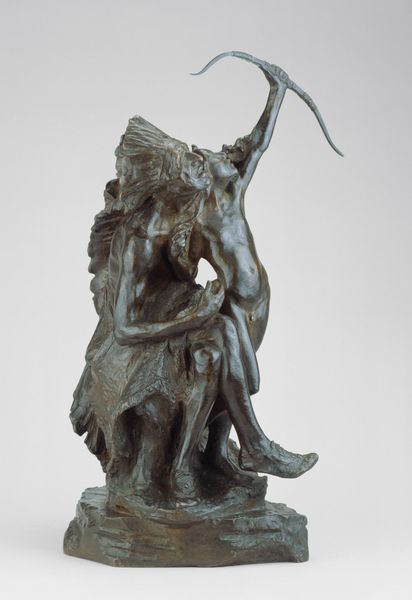
metal, sculpture
#
portrait
#
metal
#
sculpture
#
decorative-art
Dimensions: Height: 3 7/16 in. (8.7 cm)
Copyright: Public Domain
Curator: Let’s explore this "Chessman (Bishop)" crafted between 1850 and 1875, currently housed at the Metropolitan Museum of Art. It's credited to Elkington & Co. Editor: The gleam is remarkable. Is this entirely metalwork? There’s something wonderfully diminutive about the whole piece, too, despite its rigid composure. Curator: Indeed, its materiality defines its historical placement within decorative arts of the period. It reflects an embrace of luxury goods in bourgeois society. The figure and base are silver, while the staff, topped with that eagle motif, seems to be gold gilt. The details in the clothing and the slight contrapposto stance give it a lively character, despite its scale. Editor: It makes me think about how metalworking techniques intersected with notions of fine art versus craft. The means of production for these luxury items were tied into the economics of skilled labor of the era. And how would its function shape its reception at the time? A chess piece seems functional, but here the level of ornate design leans towards decorative or collectible object. Curator: That's key – its dual nature speaks to Victorian-era collecting practices. Think about how sets were displayed, emphasizing the owner's status and taste. The bishop as a figure—its visual characteristics—also served to underscore established socio-political power structures. Its symbolic authority becomes translated through art object, accessible to wealthy elite who collected such artifacts Editor: Right. We see the object reflecting and performing these hierarchies and this focus on surface ornamentation also begs questions regarding production and distribution across society. So this chessman stands, quite literally, on complex societal terrain. Curator: Precisely, revealing the subtle politics inherent within seemingly benign domestic objects. Editor: This makes you think more critically about design and its value. Curator: It highlights the chess piece—it serves to be a historical marker of class aspirations and the power of artistic representations.
Comments
No comments
Be the first to comment and join the conversation on the ultimate creative platform.
